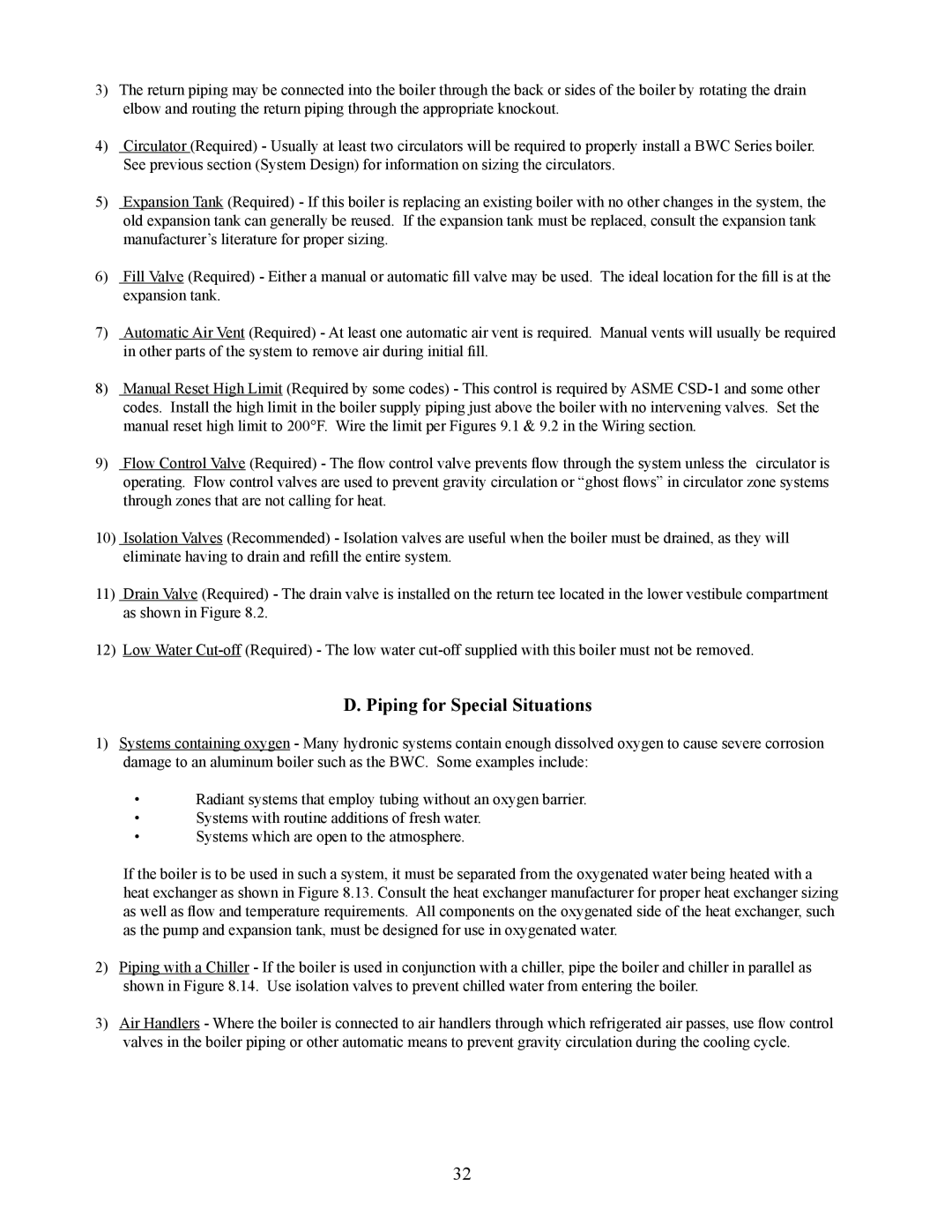BWC Series specifications
The Crown Boiler BWC Series is a modern choice for heating needs, renowned for its efficiency and robust design. This series offers a range of residential and light commercial heating applicabilities, ensuring both comfort and reliability for users.One of the standout features of the BWC Series is its efficiency. Crown Boilers utilize advanced technologies to maximize energy output while minimizing fuel consumption. With an AFUE (Annual Fuel Utilization Efficiency) rating often exceeding 90%, users can expect significant cost savings on their energy bills over time.
The BWC Series employs a high-quality, stainless steel heat exchanger, which not only enhances performance but also extends the lifespan of the boiler. This heat exchanger is designed to transfer heat efficiently, ensuring that the maximum amount of energy from the fuel is converted into usable heat. Additionally, the design helps to prevent corrosion and maintain system integrity over years of usage.
For technological advancements, the BWC Series incorporates a modulating gas valve which allows for precise control over the boiler's operation. This feature enables the system to adjust its output based on the heating demands of the home, resulting in improved energy efficiency and consistent comfort levels. Moreover, this modulating technology reduces the frequency of cycling, thereby prolonging the lifespan of the unit and minimizing wear and tear.
Another characteristic of the Crown Boiler BWC Series is its user-friendly interface. The boiler is equipped with a simple control panel that allows for easy monitoring and adjustment of settings. This accessibility is essential for users who want to manage their heating system without the need for extensive technical knowledge.
In terms of installation and maintenance, the BWC Series is designed with convenience in mind. Its compact footprint allows it to fit comfortably in a variety of spaces, making it an ideal choice for homes with limited installation areas. Additionally, Crown Boiler's commitment to high manufacturing standards ensures that the units require minimal maintenance, providing peace of mind to homeowners.
Overall, the Crown Boiler BWC Series is an excellent solution for those seeking efficient, reliable heating. Its combination of advanced technology, quality construction, and user-friendly design makes it an attractive option for any residential or light commercial application. Whether replacing an old system or installing a new one, the BWC Series delivers comfort and performance that can be depended upon.
